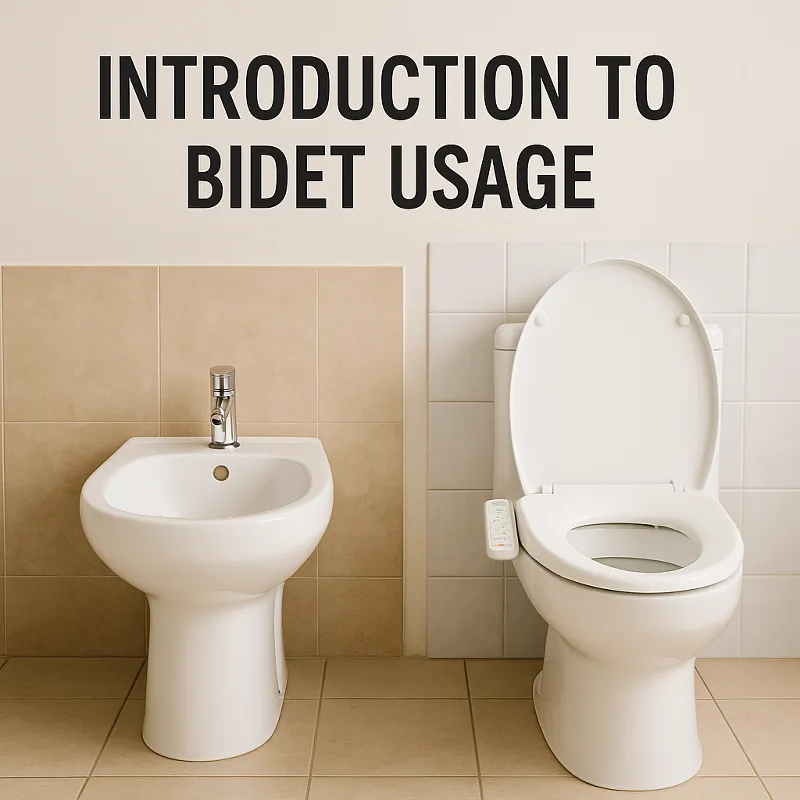
Introduction to Bidet Usage
In recent years, bidets have become increasingly popular worldwide as people seek cleaner and more sustainable hygiene solutions. The adoption and usage habits of bidets, however, vary significantly between regions, particularly between Europe and Asia. This blog post explores these differences, providing a comprehensive comparison that highlights cultural, historical, and practical aspects of bidet usage in these two parts of the world.
Analysis of Factors Driving Growth in the US Bidet Market 👆Historical Background
European Origins
The concept of the bidet was first introduced in France during the late 17th century. Initially, it was a luxury item used by the upper echelons of society. These early bidets were simple, basin-like devices placed in the bedroom, reflecting the hygiene practices of the time. As plumbing technology evolved, so did the design and functionality of bidets, making them a staple in many European bathrooms by the 20th century.
Asian Adoption
In contrast, Asia’s adoption of the bidet, particularly in countries like Japan and South Korea, is a more modern development. The introduction of the electronic bidet in the late 20th century marked a revolution in personal hygiene across Asia. These high-tech versions, often integrated with toilets, offer a range of features such as heated seats, adjustable water pressure, and even air drying, making them a preferred choice in many Asian households.
History and Present of Japanese Bidet Culture 👆Cultural Influences
Europe’s Hygiene Standards
In Europe, personal hygiene has long been a subject of cultural importance. The use of bidets reflects a broader European emphasis on cleanliness and comfort in personal care. Countries like Italy, Spain, and Portugal have particularly high rates of bidet usage, with installations commonly found in both residential and hotel bathrooms. This focus on hygiene aligns with Europe’s broader historical trends towards health and sanitation.
Asia’s Technological Integration
Asian countries, particularly Japan, have integrated technology into everyday life at a rapid pace, including in the bathroom. The Japanese culture’s focus on technology and innovation is evident in their advanced bidet systems. These devices often include remote controls, customizable settings, and even music options to enhance the user experience. This technological integration not only reflects Asia’s comfort with technology but also its dedication to improving quality of life through innovation.
Checklist for Purchasing Eco-Friendly Bidets 👆Practical Considerations
Space and Installation
One of the practical differences in bidet usage between Europe and Asia is related to space and installation. European bathrooms typically have more space to accommodate standalone bidets, leading to their widespread use. In contrast, Asian bathrooms, often smaller in size, favor integrated bidet-toilet systems that save space while providing a multifunctional sanitation solution.
Cost and Accessibility
Cost also plays a significant role in the adoption of bidets. In Europe, the installation of a standalone bidet can be costly, which may limit its presence to more affluent households. In Asia, however, the production and consumption of electronic bidet systems have become more cost-effective over time, making them accessible to a broader demographic. This affordability, coupled with the high value placed on modern conveniences, has spurred widespread adoption in countries like Japan and South Korea.
Impact of Bidet Use on Preventing Deforestation 👆Environmental Impact
Water Usage
Bidet usage has environmental implications, particularly concerning water consumption. In Europe, where standalone bidets are common, water usage is generally higher due to the separate plumbing systems required. However, many European models are designed to minimize waste through efficient water flow management. Conversely, in Asia, integrated bidet-toilet systems often use less water per use, thanks to advanced technology that regulates water pressure and duration.
Reduction of Paper Waste
Both Europe and Asia benefit environmentally from the bidet’s ability to reduce toilet paper consumption. In regions where bidet usage is prevalent, households report significantly lower paper waste, which contributes positively to environmental sustainability efforts. This reduction in paper waste not only saves trees but also minimizes the energy and water used in the production and transportation of toilet paper.
The Relationship Between Reducing Plastic Packaging and Bidet Adoption 👆Health and Hygiene Benefits
Enhanced Cleanliness
One of the primary benefits of bidet use, regardless of region, is enhanced personal cleanliness. Bidets offer a more thorough cleaning experience compared to toilet paper alone, which can be particularly beneficial for individuals with sensitive skin conditions or mobility issues. This level of hygiene is highly valued in both European and Asian cultures, contributing to the bidet’s popularity.
Prevention of Infections
In addition to cleanliness, bidets can play a role in preventing infections. By providing a gentle and effective cleaning method, bidets help reduce the risk of urinary tract infections and other related health issues. This is particularly important for women and the elderly, who may be more susceptible to these conditions. Both European and Asian health experts advocate for bidet use as part of a comprehensive approach to personal hygiene.
How Bidets Can Contribute to Carbon Emission Reduction 👆Conclusion
In conclusion, while bidet usage habits in Europe and Asia differ due to historical, cultural, and practical factors, both regions demonstrate a commitment to improving personal hygiene standards. Europe’s tradition of standalone bidets and Asia’s innovation in electronic bidet-toilet systems each reflect unique approaches to achieving the same goal: enhancing cleanliness, comfort, and sustainability in everyday life. As global awareness of hygiene and environmental issues continues to rise, the bidet’s role in personal care will likely expand, leading to even more diverse and advanced solutions across the world.
Related Post: Checklist for Purchasing Eco-Friendly Bidets
Energy Comparison: Toilet Paper Production vs. Bidet Water Usage 👆